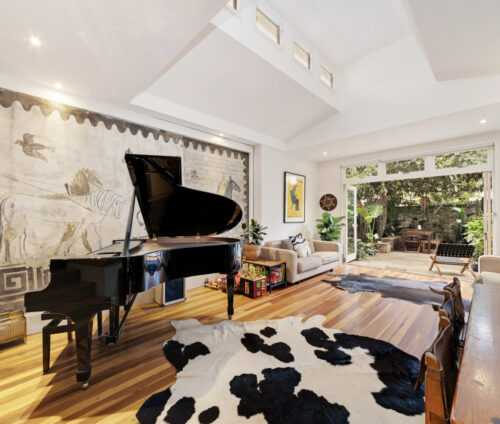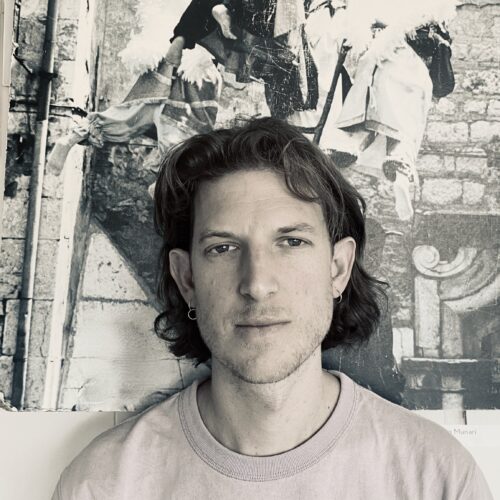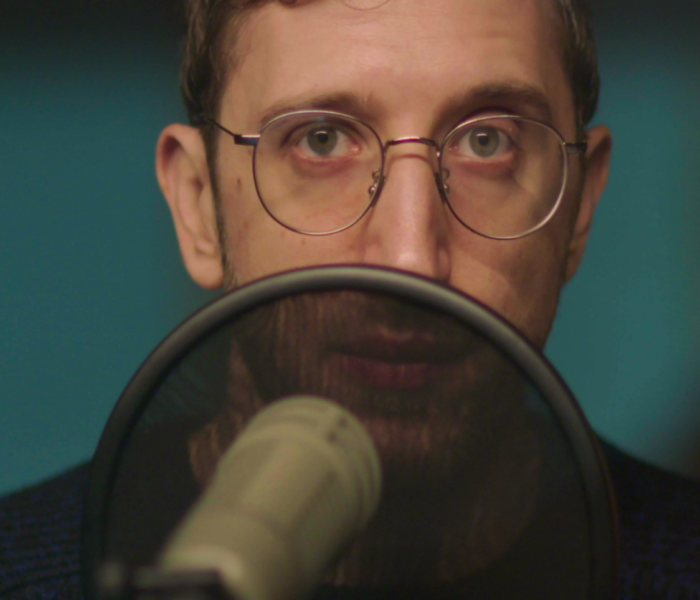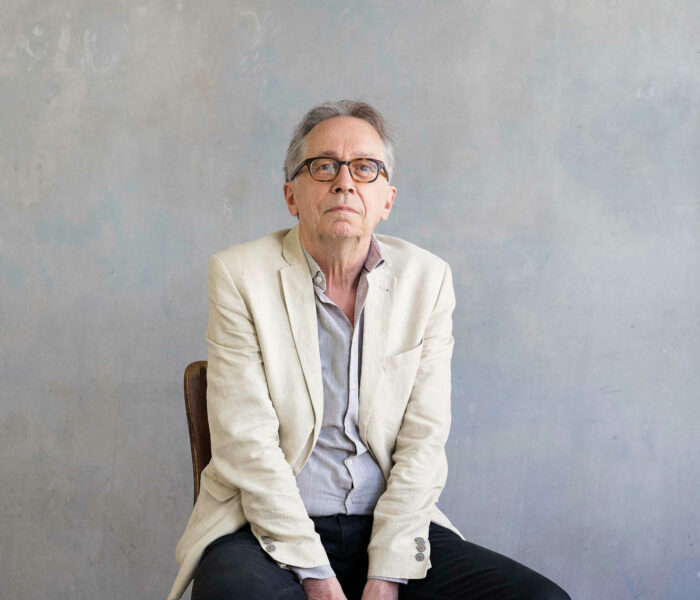An island-continent of dizzying immensity, Australia is a land of musical cross-fertilization, a land of distant composition, little known to the public. A five-stop journey through Australia's late and contemporary female composers; artists who share a taste for other places and a cosmopolitanism that's hard to deny.
The Australian traveler Peggy Glanville-Hicks (1912-1990), whose work is marked by a deep fascination for traditional music, with a strong emphasis on rhythm and modality, is a phenomenon. Travels punctuated the life of this artist of extraordinary energy and strong character: she studied in London, Vienna and Paris, followed by a career in the United States, before settling in Athens in 1957, where she studied Greek modal music in her little house in the foothills of the Acropolis, before returning home to Australia 43 years after her departure. Her Sinfona da Pacifica, composed in 1952 on an ocean liner sailing from America to Melbourne for a short tour of her homeland, is representative of her undulating orchestral palette and her fascination with rhythm.
A contemporary of Peggy Glanville-Hicks, Esther Rofe is one of the great exponents of Australian composition. A child prodigy on piano and violin, she was born in 1904 and died in 2000, leaving five ballet scores composed between 1943 and 1962. Like Glanville-Hicks, she went to London to study with Ralph Vaughan-Williams at the Royal College of Music, promising to put composition before marriage. Her little-known first ballet, Sea Legend (1943), was a resounding success from its premiere in Melbourne, and soon became more popular in Oceania than Swan Lake , with 250 Australian performances and 130 curtain-raisers in London up to 1950! The 23-minute work was the first Australian ballet to enter the international repertoire. In 1946, Terra Australis adopted the same format and symphonic palette.
Esther Rofe was deeply inspired by the sea and the coastal landscapes of her vast country. She lived for twenty years in Southport, south of Brisbane on the east coast, with her sister Edith. Her kitchen table was, according to visitors, always covered with half-finished sheet music. His ashes were scattered in Southport Bay.
Among the contemporaries, Elena Kats-Chernin is without doubt one of Australia's best-known composers. She was born in 1957 in Tashkent, the capital of Uzbekistan. When she turned 18, her family emigrated to Australia, where she continued her musical studies at the Sydney Conservatoire, after an initial course in Moscow. But Europe was calling: she settled in Hanover, Germany, and studied with Helmut Lachenmann. She stayed there for some fifteen years, then returned to Australia in 1994 to compose... and never stopped: chamber operas, ballets, film music and piano concertos.
"After a disappointing experience in Germany, I gave up composing concert music for five years and instead created scores and soundscapes for theater and dance in German theaters. This led me to compose Clocks for Ensemble Modern in 1993, which was my greatest success to date and convinced me to return to concert music," says the composer. Clocks bears witness to the influence of the rigorous school of modernism, in which Elena Kats-Chernin was trained. But the composer soon changed course and found her voice, encouraged by the open culture of her adopted country, Australia. " My music is the result of a very personal amalgam of various influences". These include elements of minimalist music, dance motifs such as her beloved ragtime - with Big Rhap for orchestra in 2017 - as well as tango and waltz, classical models such as the Slavs - Tchaikovsky, Rachmaninov - or, at the opposite end of the romantic spectrum, the Baroque, as well as Jewish and folk musical traditions.
"Another decisive moment in my career was composing the music for the ballet Wild Swans based on the Hans Christian Andersen fairy tale, choreographed by Meryl Tankard for the Australian Ballet in 2003." The composer produced an orchestral suite in twelve tableaux. One of her best-known pages is "Eliza Aria".
Commissioned by the Australian String Quartet, the quartet entitled From Anna Magdalena's Notebook is inspired by the material in the little book by Bach's second wife.
The composer likes to give prominence to instruments not usually at the forefront of the repertoire: she thus composed The Witching Hour in 2016, a concerto for... eight double basses.
The world we live in resonates in his music. His Symphonia Eluvium is a musical commemoration of the 2011 Queensland floods. Human Waves, for choir and orchestra, deals with the issue of migration and the diversity of the Australian population. In 2022 Elena Kats-Chernin was composer-in-residence with the Queensland Symphony Orchestra.
Born in 1979, Kate Moore is the epitome of the cosmopolitan composer. She spent the first ten years of her life in the Netherlands, before the family moved to Australia. There, she studied with Australian composers Larry Sitsky, Jim Cotter and Michael Smetanin. In 2002, she returned to the Netherlands to study at the Conservatory in The Hague, where she still lives and works today. " I don't believe in the principle of nationalism when it comes to composition", she warns from the outset. Yet the Australia of her youth has left a lasting impression on her imagination: "When I write music, I'm looking for something. I feel the Australian landscape, but not necessarily its form. Maybe it's an idea of Australia's soundscape... This amazing three-dimensional soundscape is the most beautiful orchestration imaginable." Kate Moore loves creating sound worlds: she composes instrumental music, concert music, but also imagines sound installations. " My work is about what lies beneath the surface," she says repeatedly. She is particularly interested in the history of the origins of sound, the origins of music and of musical instruments, an essential, archaic, raw dimension that can be found in some of her works, such as her highly poetic and sensual Blackbird Song (2020).
The musician remains attached to her homeland, with a series of commissions from Australia's major symphonic phalanges, such as the Willoughby Symphony Orchestra, which commissioned a piano concerto from her. Kate Moore completes the score for Béatricewhich is the title of the opus, in 2019.
Electronics occupy a notable place in her work, with hypnotic works of minimalist tonality where the trance of techno is palpable, such as Fatal Strangersan electronic quartet for electronic wind controller (EWI), electric violin, synthesizer and drums. " This sound could take place in the basement of a discotheque in the early hours of the morning..." explains Kate Moore.
Representative of the new generation, Suzanne Kosowitz, was born in Perth, where she still lives. She is deeply committed to her art: "Music is unique in that it immediately gives people a deep sense of community. My aim is to connect cultures through music," she explains. To connect my own Jewish heritage to the indigenous peoples of my country and to the myriad of other cultures that surround us. In a multicultural society like Australia's, I think it's extremely important that audiences can identify with both music created in the world and music created by local artists." A true manifesto. Many of her works are inspired by her Jewish roots, which she combines with other influences: jazz, classical and traditional music. In early 2024, Suzanne will begin a year-long residency at the Peggy Glanville-Hicks Foundation.
In Sydney, house seeks female composers
Located on the outskirts of Sydney, Peggy Glanville-Hicks' latest home welcomes young composers in residence each year, according to the composer's wishes. Paul Mason is one of the directors of the foundation.
What's the story behind this house?
Peggy was 63 when she returned to Australia for good: it was 1975. She stopped composing. She died at her home in Paddington, on the outskirts of Sydney, in 1990. In the course of her career, she had been able to count on a number of composition grants and residencies. It was essential for her to be able to provide young composers with the time, space and peace of mind they needed to create. I'd like to quote her on this subject: "It is obvious that leisure and silence are absolute prerequisites for composers if they are to fully engage the many forms of consciousness involved in creative activity. This leisure and silence have become the greatest luxuries of the modern world, and composers less than any other artistic or scientific group are capable of commanding it." She arranged for her pavilion to become a place of residence for Australian composers upon her death.
What happened when she died in 1990?
It was important to her to leave the house to future generations of composers. She even said that they would always find a place to stay with her. After her death, for the first few years, the house reverted to the state. Peggy had appointed executors who followed her instructions: they created a Trust to look after the house and set up residencies from 1994 onwards. The house welcomed 29 Australian artists for one-year residencies. The long term is important, and a year is not too much time to appropriate a place and create serenely. In 2016, the National Trust of Western Australia made available another house, Gallop House, in Perth, on the other side of the country, as an additional place of residence. We look forward to opening more houses around the country!



How do you choose the residents for your "Prélude" program?
We issue a call for applications in which we ask applicants to tell us three things: their practice, the impact the residency would have on their career, and how they would concretely put this year of residency to good use for their art but also for the community. The residency lasts from January to December, and we welcome one composer per house. We allocate them an envelope of 15,000 Australian dollars [about 9,100 euros NDLR] to help with utilities and living expenses. We also give them a small sum, 2500 dollars, to enable them to organize what we call "community events", most of the time small concerts, auditions during which composers can test their new pieces with a small audience. It's essential! Lately, we've noticed that our residents are giving a lot of thought to how best to organize these concerts, these encounters, to talk about their art, to talk about music and creation with the public.
Finally, in your selection, do you pay particular attention to women composers, Peggy Glanville-Hicks having been a composer at a time when few women really had access to this profession?
Yes, of course. We have at least parity, if not two female composers per year. This year, we asked Elena Kats-Chernin, one of our former residents in 1996, to be the patron of the Peggy Glanville-Hicks Composers House. This year of residency was very important to her as a mother of three young children. Lately, we've also been keen to welcome composers from the country's aboriginal communities. It's a commitment we've made to highlight this heritage, which is all too often neglected.
Suzanne Gervais



)



